If you visit Google Trends, iOS app development query has been at peak popularity since the beginning of 2023. From developers to students & entrepreneurs, “what programming languages are best for iOS app development” is one of the most common queries.
The requirements of an app idea also affect the choice of programming language because every language has its own offerings. To know your requirements better, you must first evaluate your app idea and research the feasibility of the market. Then you must find out if you want to opt for native or cross-platform app development.
Table of Contents
Market Stats of iOS
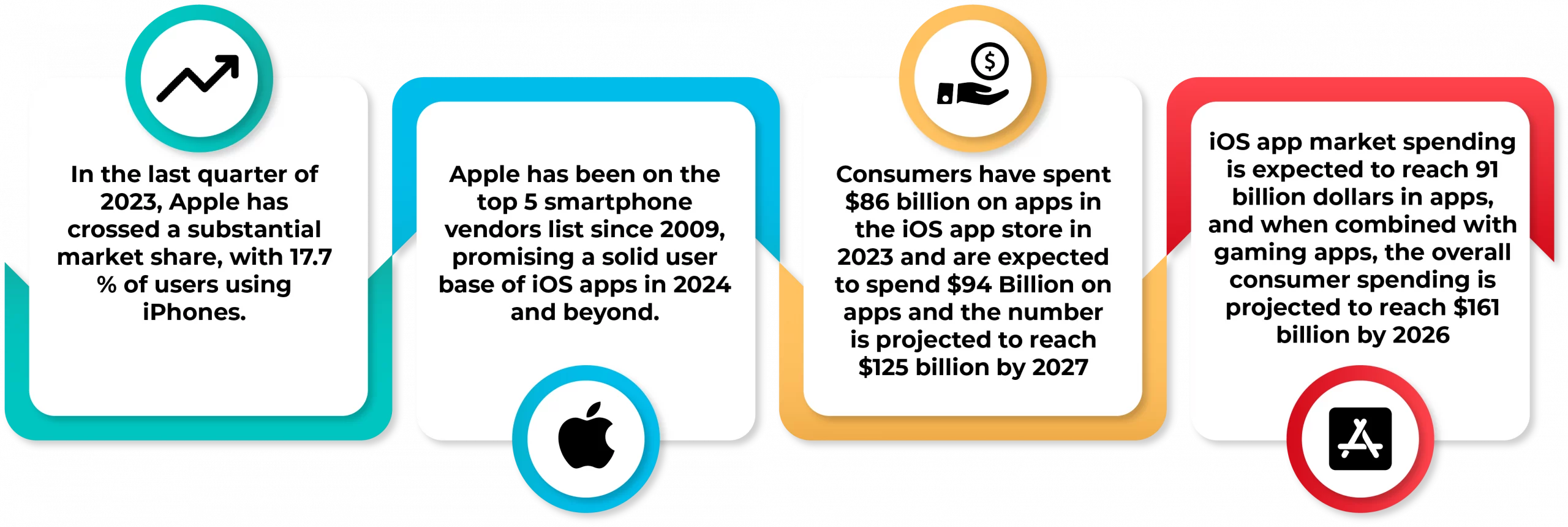
- In the last quarter of 2023, Apple has crossed a substantial market share, with 17.7 % of users using iPhones. (Source).
- Apple has been on the top 5 smartphone vendors list since 2009, promising a solid user base of iOS apps in 2024 and beyond.
- Consumers have spent $86 billion on apps in the iOS app store in 2023 and are expected to spend $94 Billion on apps and the number is projected to reach $125 billion by 2027.
- iOS app market spending is expected to reach 91 billion dollars in apps, and when combined with gaming apps, the overall consumer spending is projected to reach $161 billion by 2026 (Source).
The market share of the iOS industry is enough to speak about the legacy of Apple. And it is also a reason why entrepreneurs target a premium market share by working with iOS app development companies. Let us dig out the most popular iOS development languages.
Digging The Best iOS App Development Languages
Here we will look at the most popular languages in the market. We will see its popularity, features, advantages, and when to use it as part of all the languages for your better understanding. The article has separated native and cross-platform languages so you can quickly grab the best iOS development language according to your requirements.
iOS Programming Languages To Build Native Apps
When we say Native, we refer to a dedicated app development process. When you build a native app for iOS, your app will only work in the iOS operating system. You cannot run it on Android.
Native apps provide a higher engagement with the operating system where the app can deliberately use hardware like the camera and other sensors effectively. Here are the best iOS programming languages for native apps.
Swift- An Apple-Owned Product
Since its release in 2014, Swift has been a go-to choice for iOS app developers. Apply released Swift as a direct competition to Objective C. iOS app developers have built robust iOS apps with Swift since it integrates very well with the Apple ecosystem. Swift 5.9 is the latest version released in September 2023.
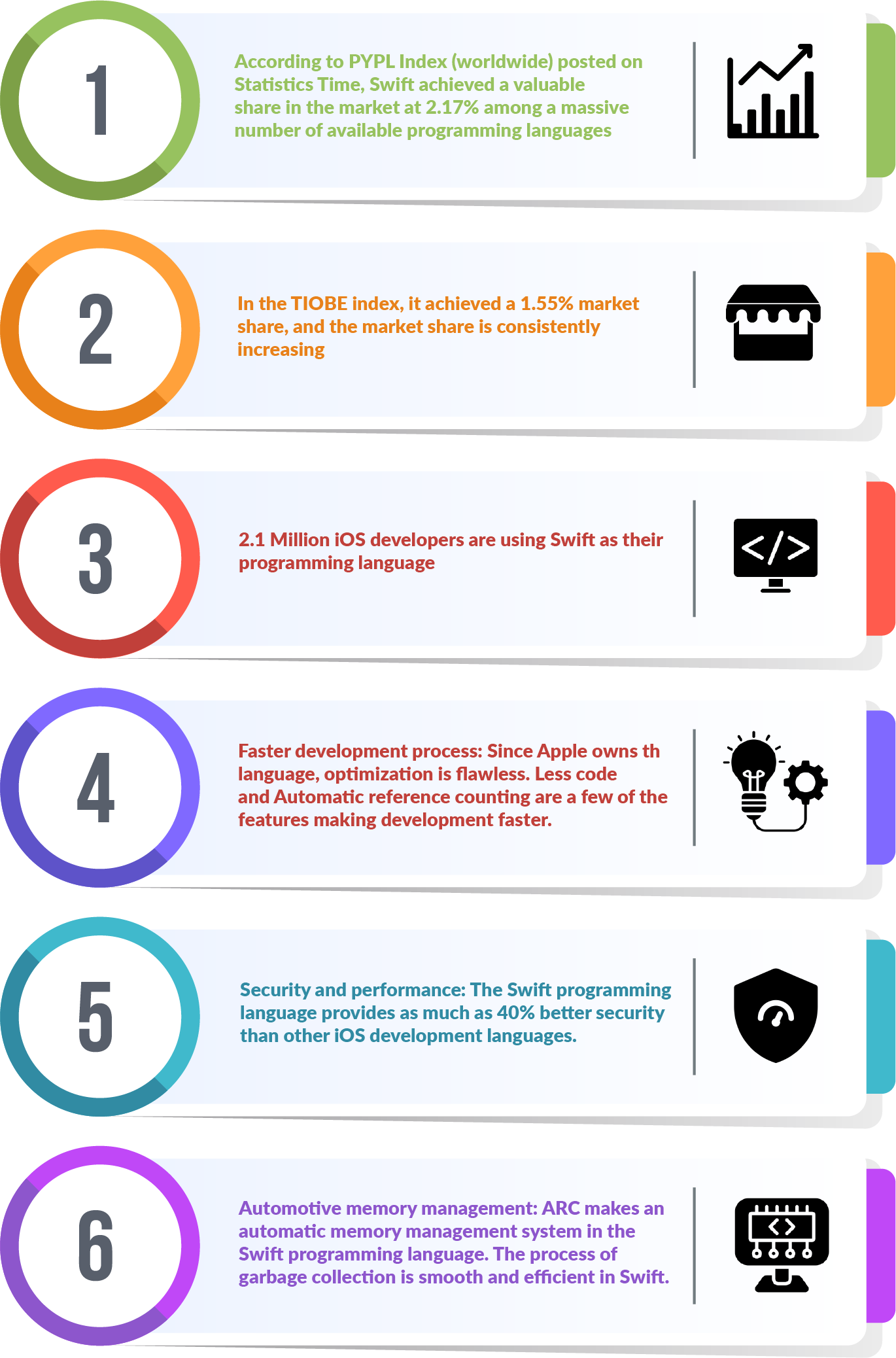
Market Popularity of Swift
- According to PYPL Index (worldwide) posted on Statistics Time, Swift achieved a valuable share in the market at 2.17% among a massive number of available programming languages (Source).
- In the TIOBE index, it achieved a 1.55% market share, and the market share is consistently increasing.
- 2.1 Million iOS developers are using Swift as their programming language (Source).
Advantages of Swift as an iOS Programming Language
- Faster development process: Swift enjoys a faster development process than other programming languages for iOS. Since Apple owns it, they have optimized and integrated it into a robust format. Less code and Automatic reference counting are a few of the features that make Swift the best iOS development language.
- Security and performance: The Swift programming language provides as much as 40% better security than other iOS development languages. This is why a vast number of iOS developers use Swift for development. A few features of Swift are handling complex crashes and errors with effortless fixes.
- Automotive memory management: ARC makes an automatic memory management system in the Swift programming language. The process of garbage collection is smooth and efficient in Swift.
Features of Swift Programming Language
- Native error handling provides better support to rectify the errors in application.
- Single file structure and class definition makes the programming experience quick.
- Memory management is automatic in swift programming language.
- With LLDB debugger Swift provides integrated debugging, and failure recovery.
Read More: Top 15 New Swift 5 Features to Use in iOS App Development
When to Use the Language
Swift is owned by Apple, which can be an ample reason for the developers to use this language. Further, if you want a faster development, security, and better garbage collection process, you can opt for Swift.
Objective C- The Old-school Player
Objective-C was built in 1984, and it because famous for building iOS applications before Swift arrived. It is derived from the C programming language with added object-oriented and dynamic run-time features.

Market Popularity of Objective-C
- According to the Stack Overflow 2023 survey, 87,585 responses were recorded related to multiple programming languages.
- Objective C won 2.3% in usage, aggregating that a good amount of developers still use Objective C for development.
- Objective-C is still holding 2.03% of searches in Google searches (Source).
Advantages of Objective-C as iOS App Development Language
- Approved and well tested: Being in the market for a long time, Objective C is very stable for development. Before many new languages were released, it was one of the best iOS development languages. And it is well tested by a number of experts.
- Easy, private APIs: Connecting private APIs is easy for developers in Objective C. Developers note minimum crashes while integrating private APIs with Objective-C.
- Compatible with C++: Objective C is derived from C and C++. It enjoys the power of the C language with the added advantage of an object-oriented approach.
Features of Objective C
- Objects and Class Creation is automatic with Objective C. It is also easily manageable during the run time.
- Dynamic typing lets developers declare variables holding reference to an object.
- The language is simple to understand for beginner developers.
- Support for iPhones, iPads, Mac computers, Apple TV, Apple Watches, etc.
When to Use
When you have to use C or C++ third-party frameworks extensively, Objective C is a better choice of development for iOS. You should not use any other language if the previous code is written on Objective C.
iOS Development Languages for Cross-Platform iOS Apps
Cross-Platform apps are built to work on multiple operating systems and devices making them popular among the iOS app developers. Considering defination, it is an app built with a cross-platform approach on Android has the potential to work on iOS with the same code. Here are a few of the cross-platform iOS app development languages.
ReactNative- Learn Once, Write Anywhere
ReactNative is owned by Meta Platforms (earlier Facebook). Being built by one of the top giants in the tech world, ReactNative is highly used to deploy cross-platform apps on iOS and Android.
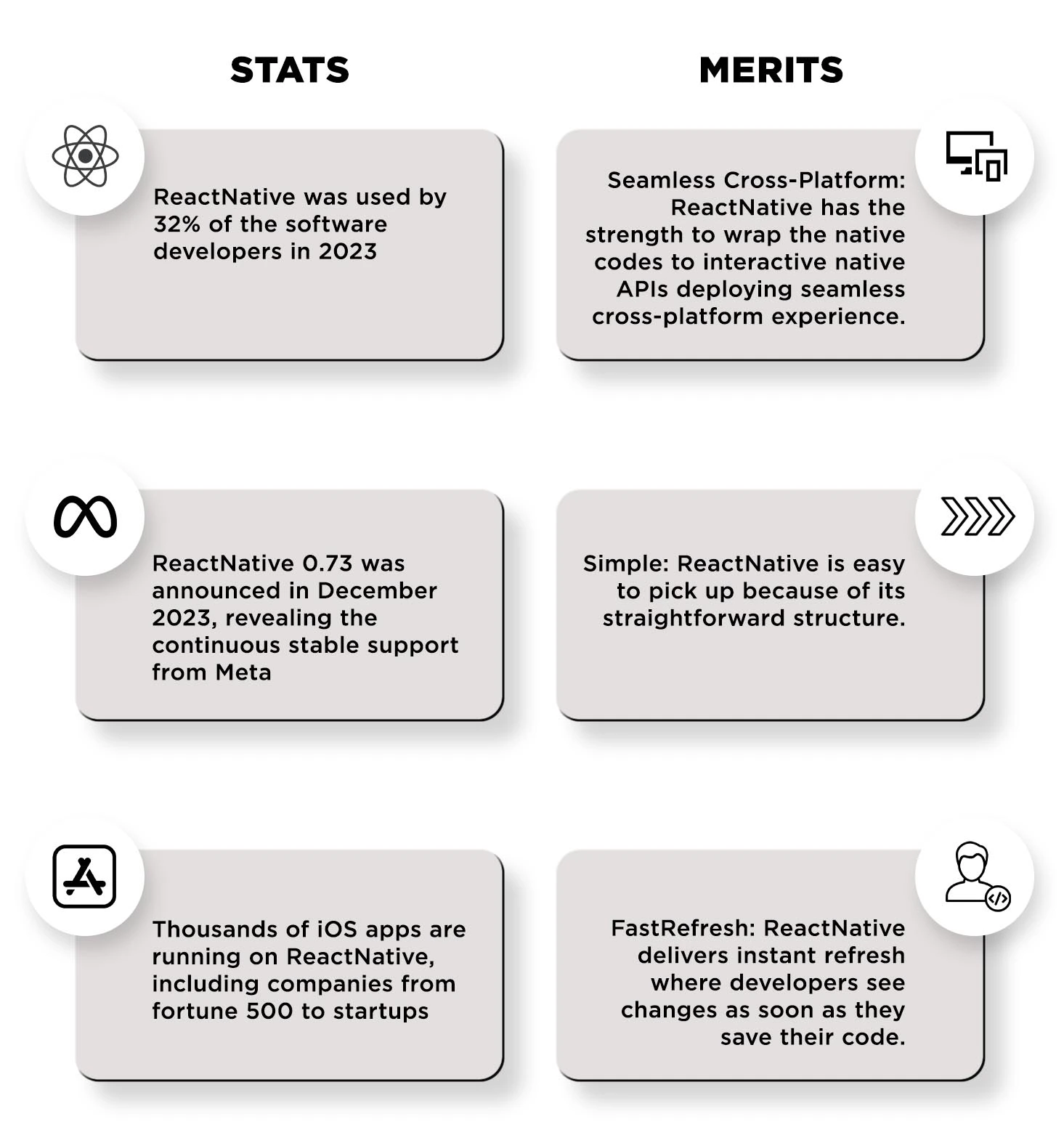
Market Popularity of ReactNative
- ReactNative was used by 32% of the software developers in 2023. (Source).
- ReactNative 0.73 was announced in December 2023, revealing the continuous stable support from Meta (Source)
- Thousands of iOS apps are running on ReactNative, incluing companies from fortune 500 to startups.
Advantages of using ReactNative as iOS programming language
- Simple: ReactNative is easy to pick up because of its straightforward structure. Despite the simplicity, this iOS programming language is robust enough.
- Seamless Cross-Platform: ReactNative has the strength to wrap the native codes to interactive native APIs. That is why it is one of the writes once and run anywhere programming languages deploying seamless cross-platform.
- FastRefresh: Earlier, developers had to change the code and compile it to see the changes they made. ReactNative delivers instant refresh where developers see changes as soon as they save their code.
Features of React Native as Programming Language
- Write once use anywhere i.e., there is no need to write code separately for multiple platforms.
- UI centric programming language to design apps that catches attention.
- Programming language with a strong community ensuring that forums are active and answered.
- Dynamic support for 3rd party libraries to let developers think out of the box.
When to Use
If you prefer massive community support and want to work with a language with a brand image, then you should go with Meta Owned ReactNative. For successful development, ensure that you hire dedicated app developers for your project.
Flutter- Build Apps for Any Screen
Google owns Flutter, and the main focus of the technology was to build, test and deploy appealing apps with a single codebase. The company has been continuously updating Flutter since its release in May 2017. Google has announced the latest release in November 2023 with Flutter 3.16.
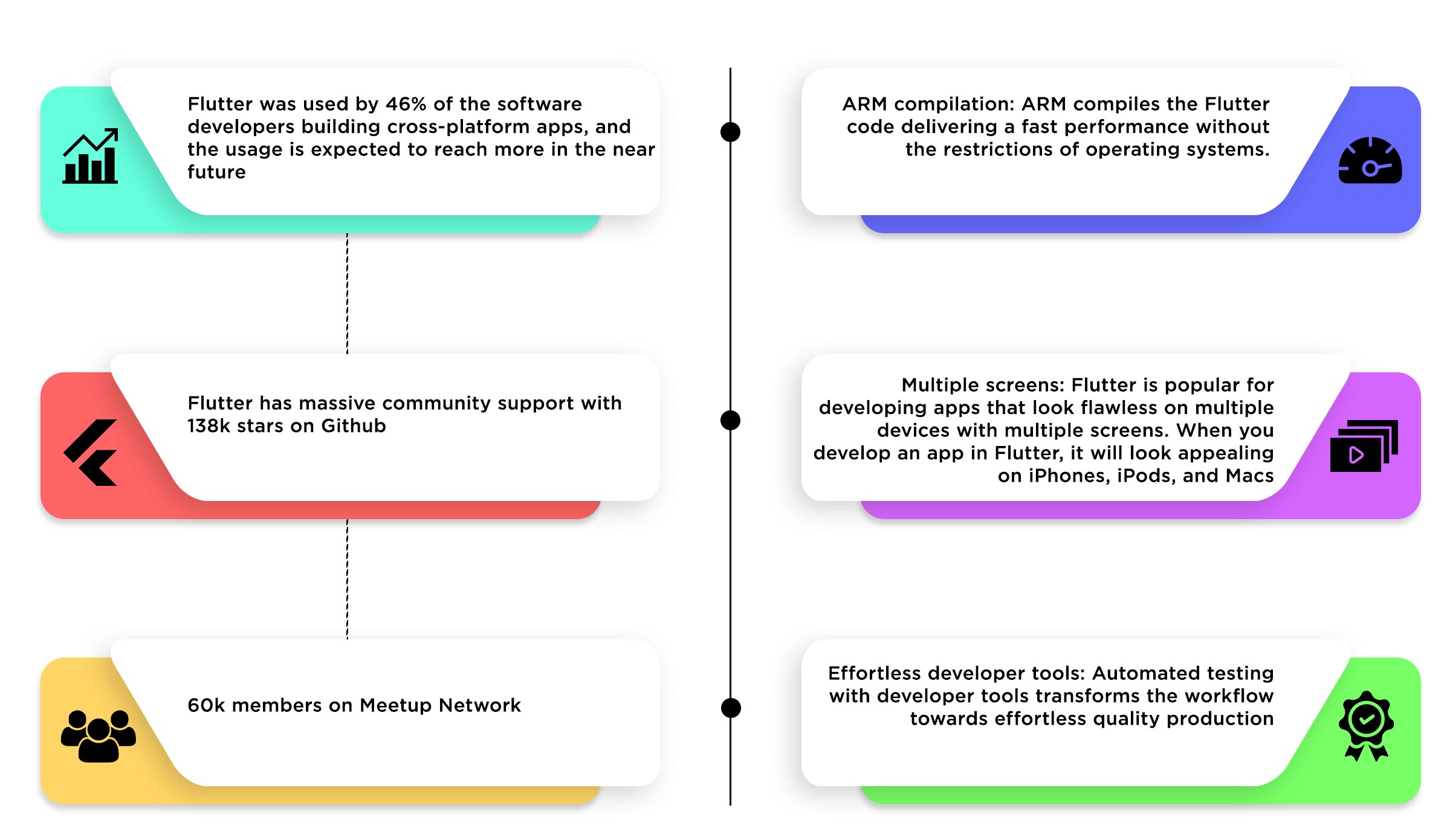
Market Popularity of Flutter
- Flutter was used by 46% of the software developers building cross-platform apps, and the usage is expected to reach more in the near future (Source)
- Flutter has massive community support with 138k stars on Github
- 60k members on Meetup Network (Source)
Advantages of using Flutter as iOS Programming Language
- ARM compilation: ARM compiles the Flutter code delivering a fast performance without the restrictions of operating systems.
- Multiple screens: Flutter is popular for developing apps that look flawless on multiple devices with multiple screens. When you develop an app in Flutter, it will look appealing on iPhones, iPods, and Macs.
- Effortless developer tools: Automated testing with developer tools transforms the workflow towards effortless quality production.
Features of Flutter Programming Language
- Dynamic widget library to let developers achieve goals efficiently.
- Native performance offered to the applications.
- Open-source programming language without any cost incurred.
When to Use
If your app focuses on appealing UI and effortless multi-screen support, then you can go with Flutter as your iOS programming language. You can also read our guide Flutter vs Swift to further get insights between the two.
Wrapping up Which is the Best iOS App Development Programming Language?
All the mentioned languages have their advantages and use cases. Yet, if you are searching for the best iOS app development language, then Swift is your go-to option. Apple owns Swift, and the company integrates the best of the possibilities into its ecosystem. However, the requirements of your app idea affect the final decisions. For example, if you want to build a cross-platform app, Flutter and ReactNative are your options. Hence, we will leave the final take on your side.
Feel free to consult RipenApps if you are looking for a Mobile app development company or have a query about the above content.
FAQs
Q1: Which programming language to use for developing native iOS apps?
There can be multiple programming languages for building native iOS apps. Yet, if you ask specifically, Swift and Objective C are highly used by top-notch iOS app development companies.
Q2: Which language is the most popular language for writing apple OSx applications?
Apple integrates the best of the functionalities into its own systems. And Swift is the programming language built by apple. It is also the most popular language for writing apple OSx applications because of its powerful native development advantages.
Q3: Which programming language to use for developing cross-platform iOS apps?
In 2024, there will be numerous cross-platform development programming languages for iOS. However, ReactNative and Flutter win the race because of their simple coding style, faster performance, and appealing UI delivery.
Q4: How long does it take to develop an iOS app?
The time frame of building an iOS app depends upon the complexities involved in it. For example, a simple app might take 2-4 months whereas an average app can take 4-6 months and a complex app may take a full year.
Q5: Why is Swift a popular choice for iOS app development?
The main reason behind the popularity of Swift is performance and efficiency. Apple designed the programming language with an aim to achieve efficiency keeping the performance in mind. Hence, it has become the go to choose for iOS app development companies.
Q6: Which programming languages are in demand for iOS app development jobs in 2024?
For 2024, there are some of the programming languages that will stay in demand as iOS app development jobs. These include:
- Swift
- Objective C
- React Native

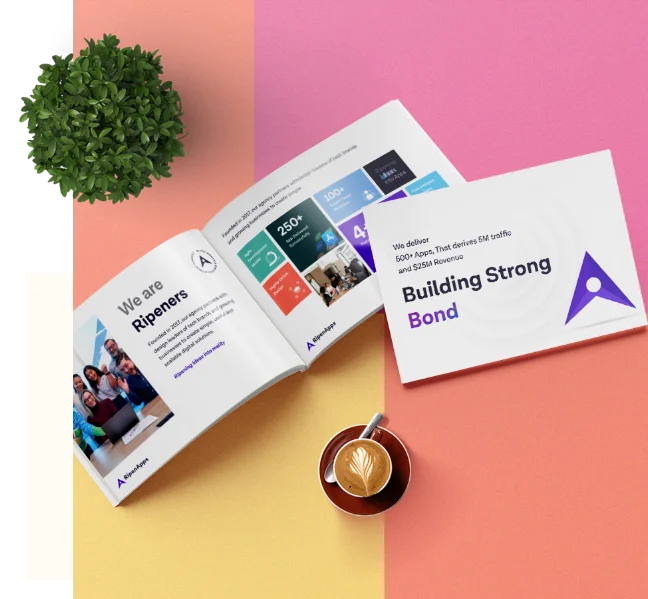
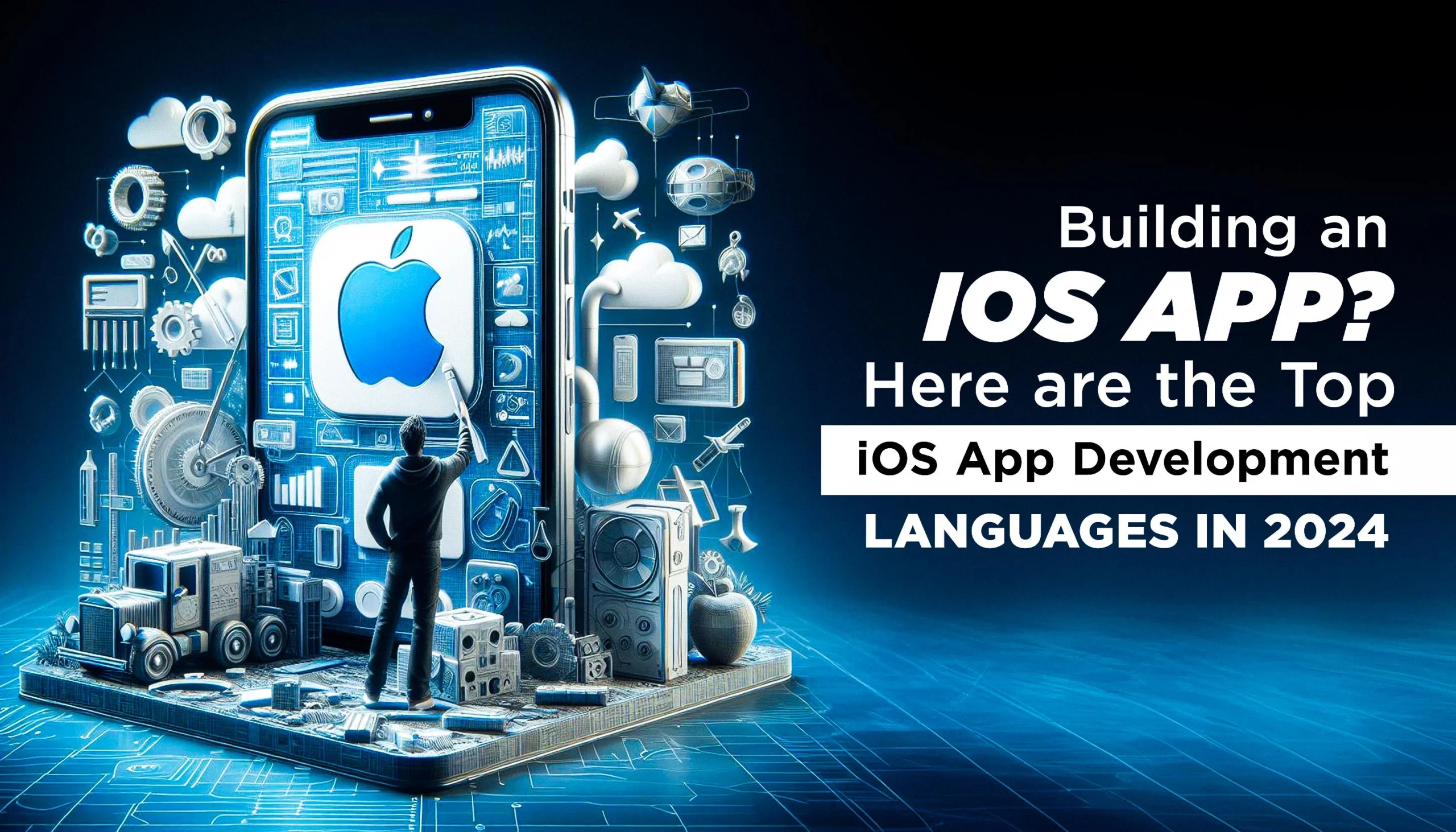




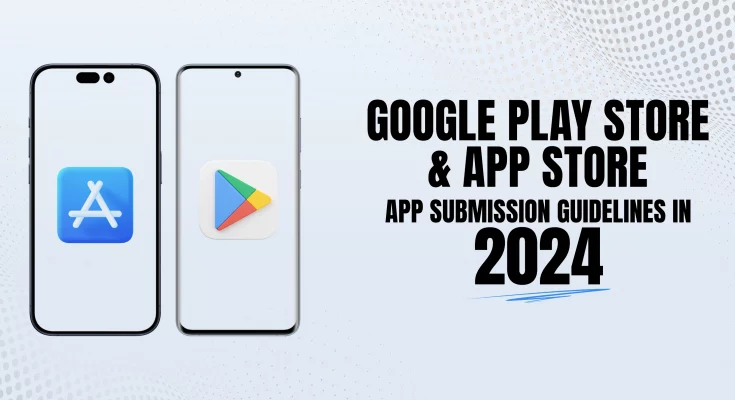

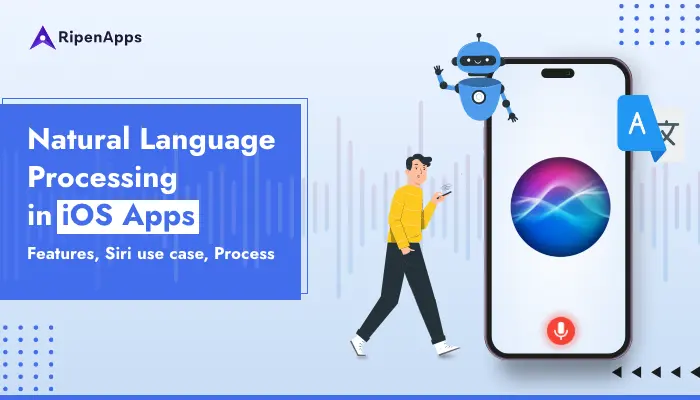
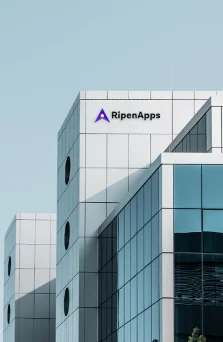
 India
India USA
USA Australia
Australia Canada
Canada UK
UK UAE
UAE